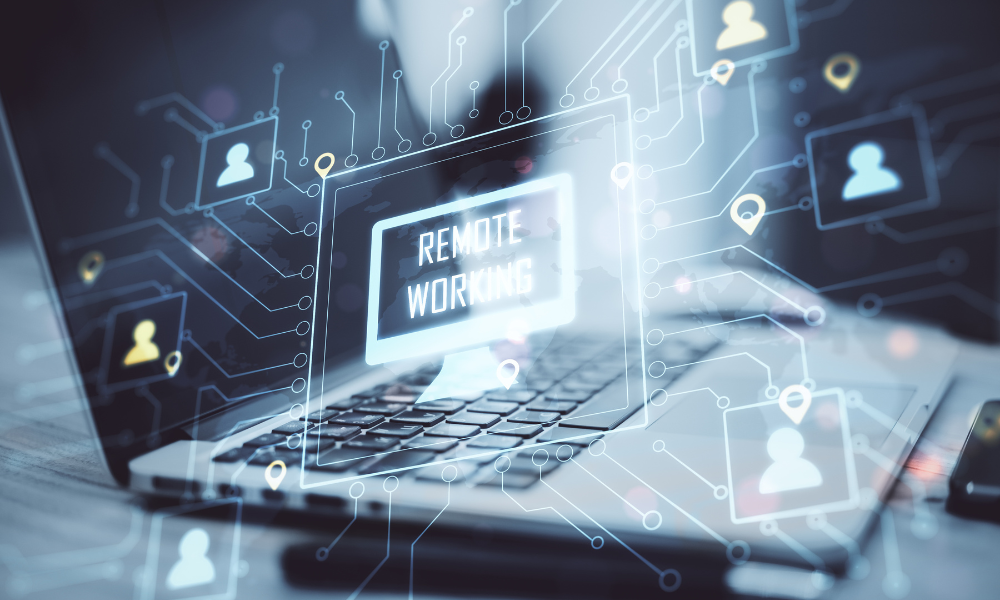
The workplace has transformed dramatically over the past few years. What was once seen as an emergency response during the global pandemic has evolved into a permanent shift in how organizations operate. Remote work is no longer just a temporary arrangement it is a central pillar of the modern workforce. By 2025, digital collaboration tools have matured into powerful ecosystems that not only connect teams across geographies but also enhance productivity, security, and employee well-being.
For companies, embracing remote work tools isn’t just about enabling video calls or file sharing. It’s about building a digital infrastructure that mirrors the physical office while going beyond its limitations. Organizations that fail to adapt risk falling behind in efficiency, talent retention, and innovation. On the other hand, those who integrate advanced remote work solutions benefit from seamless communication, stronger collaboration, and a future-ready workforce.
This guide explores the evolution, core technologies, challenges, and emerging trends in remote work tools, shedding light on how businesses can thrive in a distributed work environment.
Why Traditional Workflows No Longer Suffice
The pre-remote era relied heavily on face-to-face interactions, on-site servers, and local project management practices. While effective for the time, these methods created bottlenecks in a hyper-connected world. As workforces grew more global and hybrid, traditional workflows struggled to:
- Maintain productivity across time zones
- Ensure data security outside physical office walls
- Keep employees engaged and connected
- Scale collaboration across diverse digital platforms
These limitations pushed organizations to embrace cloud based, AI-powered, and integrated remote work solutions that keep pace with evolving workplace demands.
Core Remote Work Tools Shaping the Future
Unified Communication Platforms
The foundation of remote work lies in smooth communication. Platforms like Slack, Microsoft Teams, and Zoom are no longer just messaging or video apps they’re hubs where employees chat, meet, share files, and collaborate on projects in real time.
Benefits: Reduce miscommunication, keep teams aligned, and allow cross-functional collaboration.
Challenge: Avoiding “notification overload” and ensuring work-life balance.
Cloud Collaboration Suites
Cloud-based productivity suites (Google Workspace, Microsoft 365, Notion) centralize documents, spreadsheets, and presentations. Teams can co-edit files in real time, track changes, and access work from anywhere.
Benefits: Increases accessibility, eliminates version conflicts, and supports cross-border teams.
Challenge: Requires strong cybersecurity frameworks to protect sensitive data.
Project Management & Workflow Automation
Tools like Asana, Trello, Jira, and Monday.com help teams manage tasks, track deadlines, and automate repetitive work. With AI integrations, these platforms predict bottlenecks and suggest optimized workflows.
Benefits: Boosts accountability and productivity while reducing human error.
Challenge: Adoption requires training to ensure employees use them effectively.
Virtual Collaboration & Metaverse Workspaces
Immersive platforms such as Meta’s Horizon Workrooms and Spatial are pushing remote work beyond screens. Teams can gather in virtual environments, brainstorm on virtual whiteboards, and simulate the “office experience” without being physically present.
Benefits: Creates a sense of presence and engagement.
Challenge: Hardware requirements and accessibility remain barriers for widespread adoption.
Cybersecurity & Zero-Trust Tools
Remote work expands attack surfaces for cybercriminals. Tools like VPNs, endpoint protection, zero-trust frameworks, and secure file-sharing systems are now essentials. By 2025, AI-powered security monitoring and passwordless authentication have become the norm for distributed workforces.
Benefits: Protects sensitive company data and ensures compliance.
Challenge: Balancing security with user convenience.
Employee Engagement & Well-Being Platforms
Burnout and isolation are critical challenges of remote work. Platforms such as CultureAmp, Officevibe, and virtual team-building apps help organizations measure employee satisfaction, celebrate achievements, and strengthen team morale.
Benefits: Builds culture and reduces attrition in remote-first organizations.
Challenge: Engagement initiatives must feel genuine, not forced.
AI-Powered Productivity Assistants
AI tools are transforming remote work by handling scheduling, summarizing meetings, analyzing tasks, and automating workflows. Assistants like ChatGPT, Otter.ai, and x.ai reduce administrative burdens and free employees to focus on strategic work.
Benefits: Saves time and reduces decision fatigue.
Challenge: Avoiding over-reliance and ensuring AI outputs remain accurate.
The Impact of Remote Work Tools
Increased Flexibility Employees can work from anywhere, leading to a wider global talent pool and better work-life balance.
Improved Collaboration Integrated platforms reduce silos and make information accessible across departments.
Cost Savings Businesses cut expenses on physical offices, utilities, and travel.
Sustainability Remote work reduces commuting, lowering carbon footprints and aligning with corporate sustainability goals.
Global Inclusivity Distributed teams foster diversity and allow companies to tap into talent beyond borders.

Real-World Applications
- Tech Companies: Fully remote setups powered by Slack, GitHub, and cloud-based development tools.
- Healthcare: Telemedicine platforms, HIPAA-compliant communication systems, and remote diagnostics.
- Education: Virtual classrooms, collaborative whiteboards, and AI-based student engagement analytics.
- Finance: Secure collaboration via encrypted tools, real-time trading dashboards, and AI-driven compliance monitoring.
- Creative Industries: Cloud-based design platforms like Figma, Canva, and Miro enabling global creative collaboration.
Challenges in Adoption
Despite massive growth, organizations still face barriers such as:
- Resistance to change from traditional employees
- Security risks in data-heavy industries
- Managing time zones across global teams
- Preventing employee burnout in always-online environments
- High costs of advanced collaboration technologies
Gradual implementation, clear policies, and ongoing training are crucial for overcoming these obstacles.
Future Trends in Remote Work Tools (2025 and Beyond)
- AI-First Collaboration Predictive analytics for workload distribution, automated project summaries, and smart scheduling.
- Metaverse Workspaces Virtual reality offices where employees interact as avatars in 3D spaces.
- Decentralized Work Systems Blockchain-powered collaboration ensuring transparency and secure data sharing.
- Seamless Cross-Platform Integration Unified dashboards combining communication, tasks, and analytics into one platform.
- Wellness-Centric Tools AI monitoring for workload balance, mental health check-ins, and personalized productivity coaching.
- Passwordless & Zero-Trust Security Biometric logins and AI monitoring replacing traditional authentication.
- Global Talent Clouds Platforms connecting businesses to a global on-demand workforce powered by AI-driven matching systems.

Wrapping it Up
The future of remote work tools is not about replacing the office it’s about reimagining it. With communication platforms, AI assistants, and immersive virtual spaces, companies are no longer bound by geography. Remote work is shifting from being a “perk” to being a core business strategy that drives productivity, inclusivity, and resilience.
However, success requires balance. Organizations must pair advanced technologies with strong cybersecurity, thoughtful employee engagement, and policies that protect well-being. By 2030, the most competitive companies will not be defined by their office addresses but by their ability to build thriving digital ecosystems. Remote work tools are the bridge to that future a future where work happens anywhere, but impact is felt everywhere.
FAQs
Q : What are the main benefits of remote work tools?
A : They improve flexibility, enhance collaboration, reduce operational costs, and allow companies to tap into global talent pools. When implemented well, they boost both productivity and employee satisfaction.
Q : How do remote work tools impact employee engagement?
A : Engagement platforms and team-building apps help reduce isolation, celebrate achievements, and gather feedback. They create a sense of connection that mirrors traditional office culture in digital form.
Q : Are remote work tools secure for sensitive industries?
A : Yes, with zero-trust frameworks, encrypted communication, and AI-driven monitoring, industries like healthcare and finance can securely operate remotely while meeting compliance requirements.
Q : Will the metaverse play a big role in remote work?
A : The metaverse will expand virtual collaboration by creating immersive 3D workspaces. While still in early stages, it promises to make remote work more engaging and interactive in the coming years.
Q : What role does AI play in future remote work tools?
A : AI automates repetitive tasks, analyzes workflows, predicts bottlenecks, and improves decision-making. It reduces administrative burdens and helps employees focus on innovation and creativity.
Q : How do organizations prevent burnout in remote setups?
A : By using wellness platforms, enforcing clear boundaries, and leveraging AI tools to monitor workloads. Regular virtual check-ins and balanced policies ensure long-term employee well-being.
Q : What does the future of remote work look like?
A : The future is hybrid, AI-powered, and highly collaborative. Companies will rely on integrated platforms, immersive environments, and global talent networks, making remote work a sustainable and scalable model.

